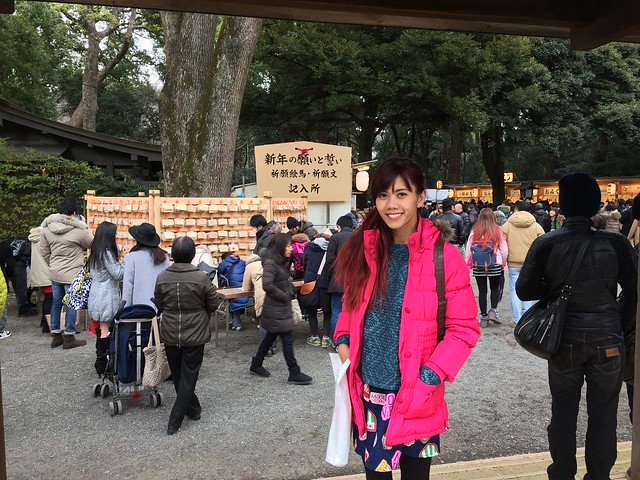
Happy 2015!
Early in the morning, my brother and I walked to Meiji Shrine from Harajuku station and it was already so packed! The night before, our hotel manager suggested us to stay awake for the first sunrise of New Year. He said Japanese prays for good health and family well being during the first sunrise, he recommended to hike a mountain to see it. Although it was quite tempting to do it the Japanese style. But besides Mount Fuji, I don't know any mountain in Tokyo, so we stick to our plan to have New Year prayer at shrine. Furthermore I don't have a pair of sport shoes with me.

It was freaking cold the morning. The station that linked to Harajuku Station is few blocks away from my hotel. We took a stroll down the street, watching people queuing up at the roadside in Nihombashi.
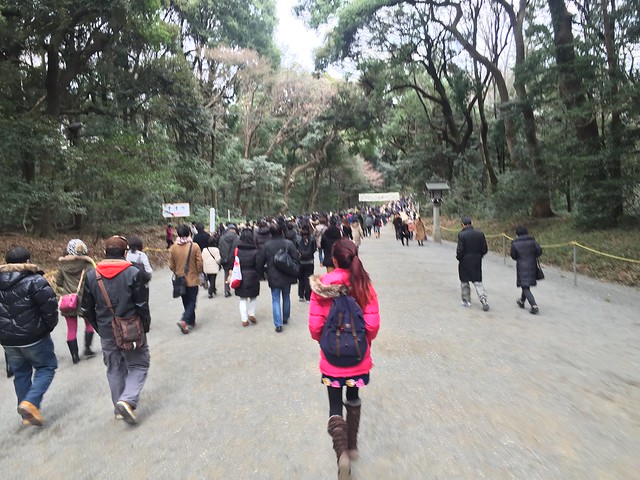
Quite a distance to the main hall, the pathway is surrounded by trees. The people were walking casually, I'm not sure about the dressing code but it seems I was one of the few with colorful outerwear. Along the way I've seen many teenagers wear skirts or shorts.
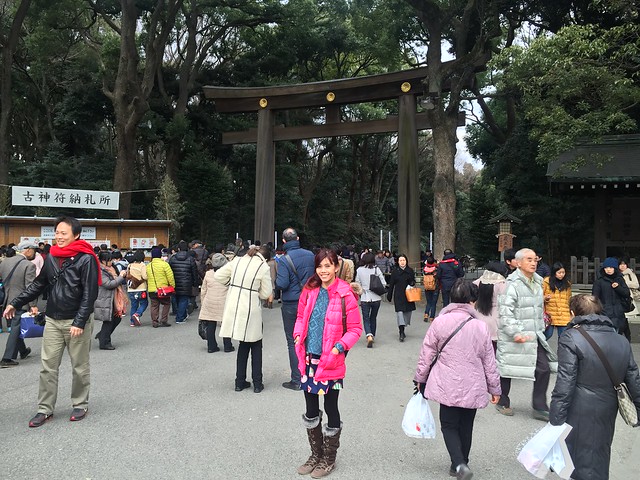
Behind me there's the Torii Gate. A Torii Gate is the boundary between the holy ground and secular world. Japanese bow once before entering the gate. As the local told us, they avoid entering the holy ground from the middle of the gate, it's how they show their respect to their God.
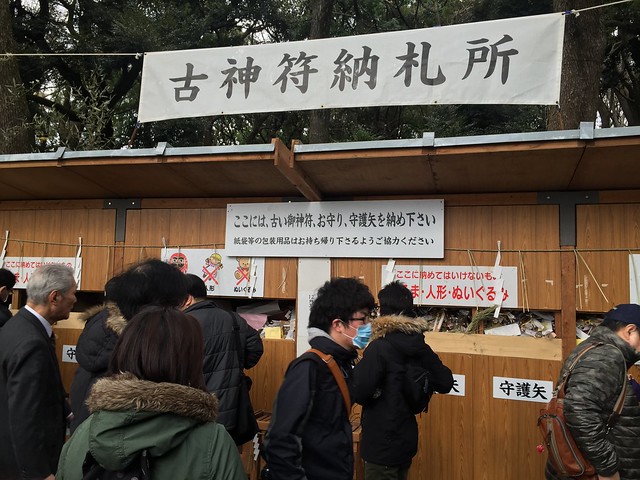
If you don't read Chinese, that's fine. This is the place where the Japanese discharge their old Omamori. Omamori, or we call it as charms or amulets. I don't have an old Omamori to burn. Generally, they buy new Omamori and make wishes. Omamori can be bought in many major shrines and temples in Japan.
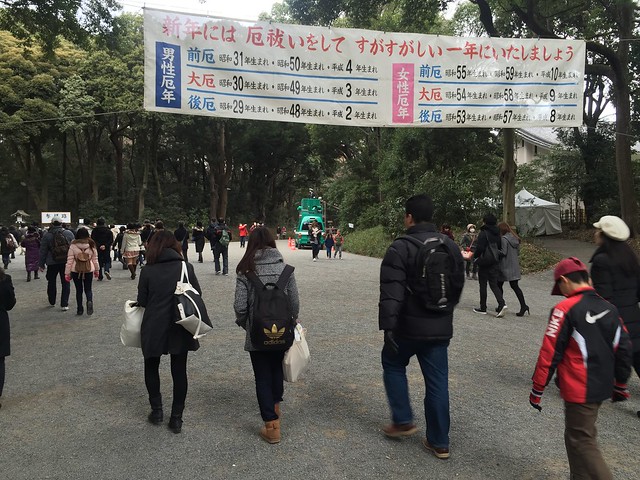
Japanese calendar is different from the modern calendar. I don't study about it, although I'm very interested with what's written on the banner, I have nobody to ask. Well, that's totally fine, we have alternative ways to know about it. You just gotta be patient.
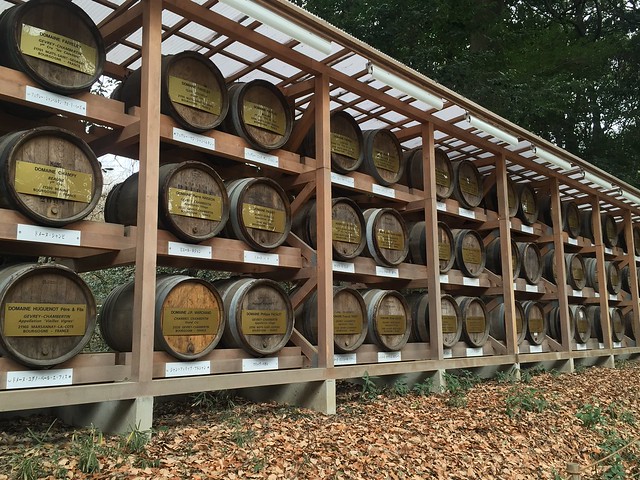
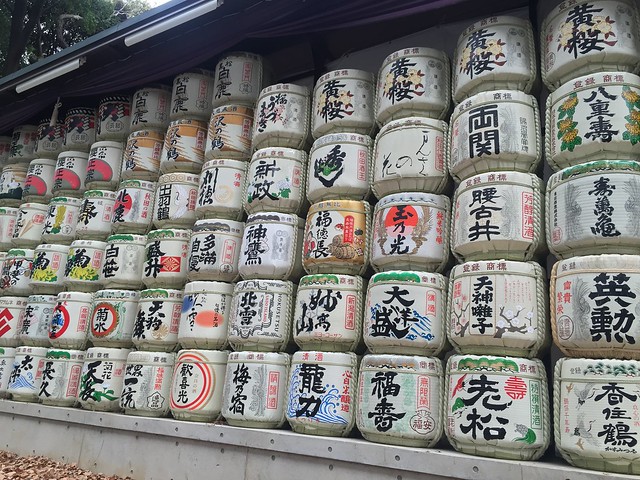
Finally, The Temizuya.
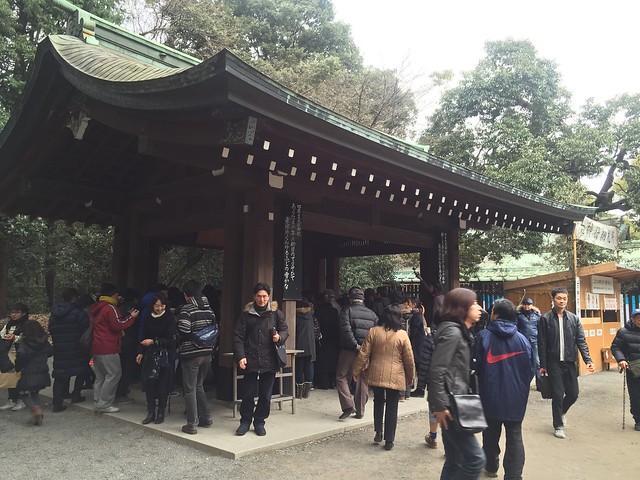
The Temizuya is a water pavilion to perform Misogi (a ritual), not a place to drink cold water. I did that during my first visit to Sensoji Temple in year 2012. I scoop the water and drank it, the weather was so hot, it seems a wise choice to keep myself hydrated by drinking the cold water. Which is totally wrong!
Anyways. Misogi is a ritual to purify the body and mind before proceeding to stand in front of the deity. There are steps for a correct Misogi. Obviously it's not a problem at all for local people, luckily, they have an instruction board over there for non-local, if you don't read Japanese, you can understand pictures, right?
First, scoop up water with your right hand and pour water over your left hand. Next, scoop water with your left hand and pour water over your left hand. Take some water from the ladle with your left hand and rinse your mouth. Rinse of the ladle with the remaining water.
The ritual is done.
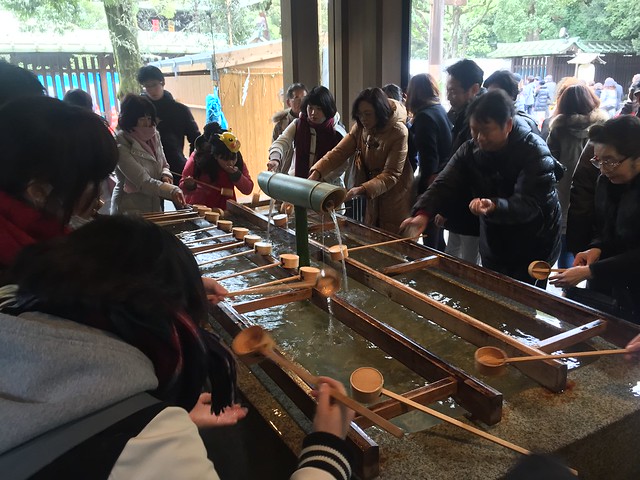
And yeah, I nailed it this time. I took some time to study the pictorial instruction. My brother was basically dipped his fingers into the water, that was because the water is freezing cold especially it was a 3-degree morning.
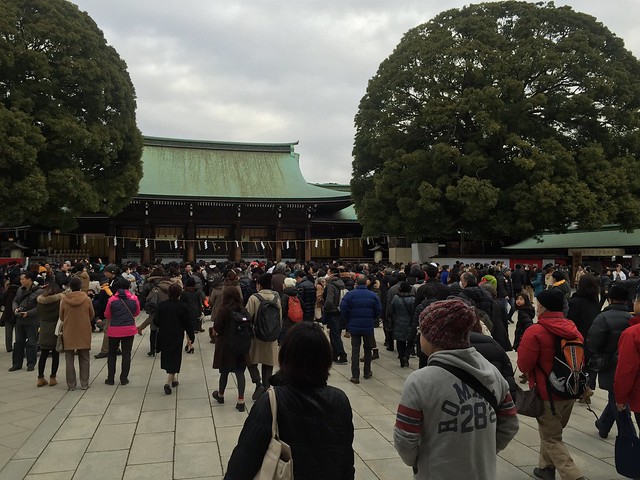
After the ritual, everyone gathered at the altar for prayer. Generally, we pay respect by tossing coins into the offering box but this time is totally different. We threw coins towards the altar, although it seems rude but that's how the local did it.
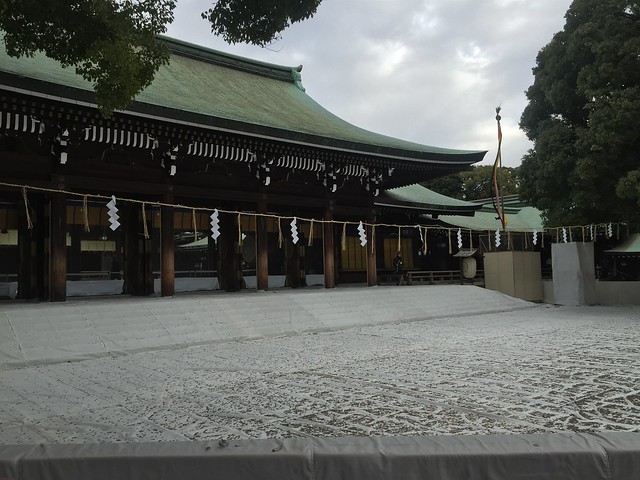
Coins, coins and coins. It's very easy to pay respect to the deity. Toss coins, bow twice, claps twice, make a wish, then bow again. A hand clap express happiness or appreciation. In this case, it expresses your joy of meeting with the deity and respect towards the deity.
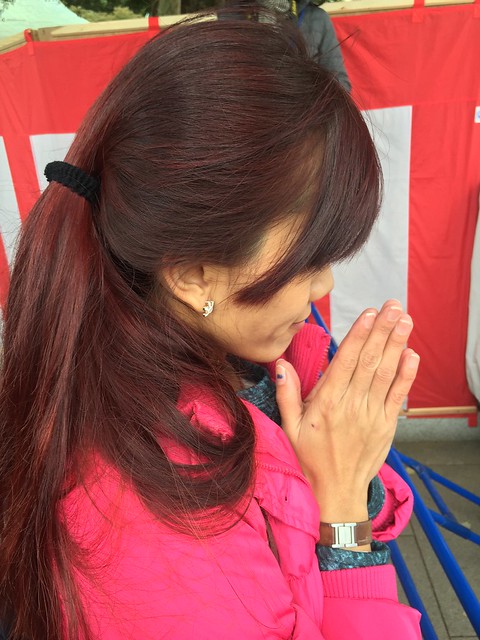
Next, make a (an official) wish. I do not know how to make a wish, the security guards weren't helpful too. And again, everything is in Japanese.
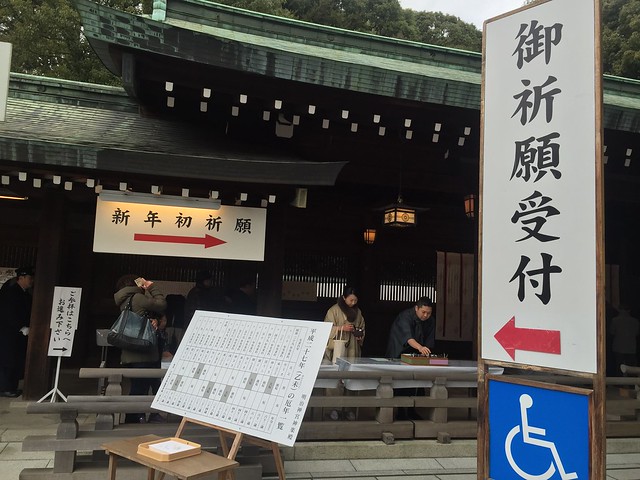
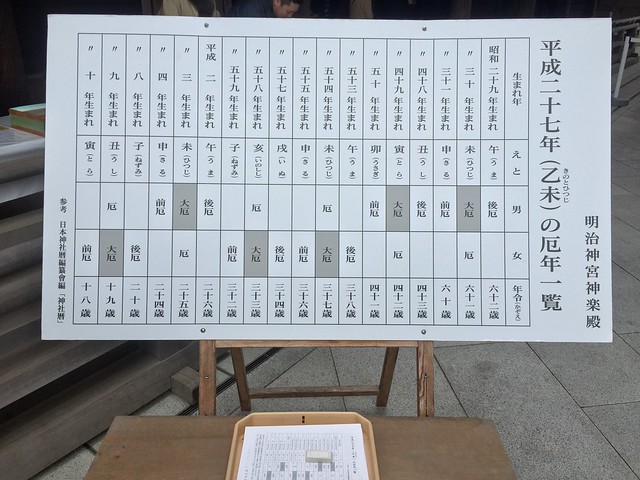
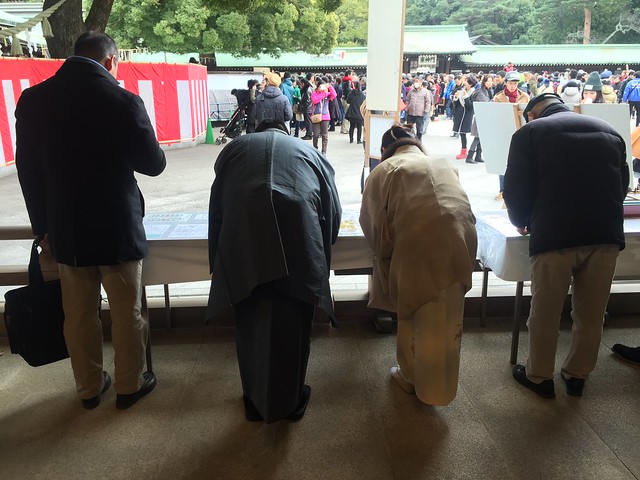
Time to get some Omamori. Meiji Jingu Shrine is huge, consists of different areas, and different entrances/exits. During the New Year, I have no time to explore the whole shrine. I headed to the West Exit and there were many stalls selling different kinds of Omamori.
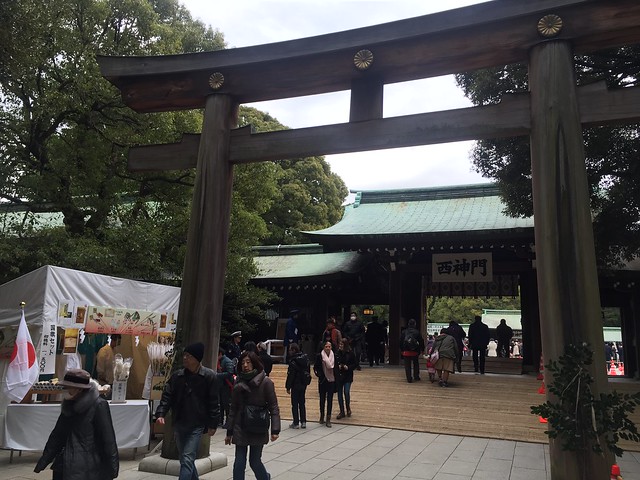


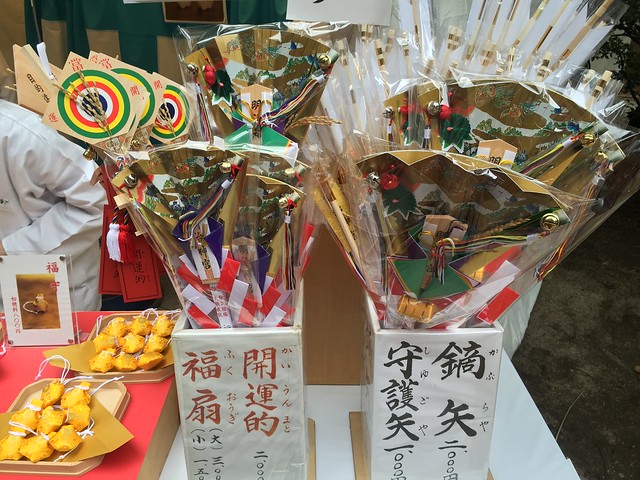
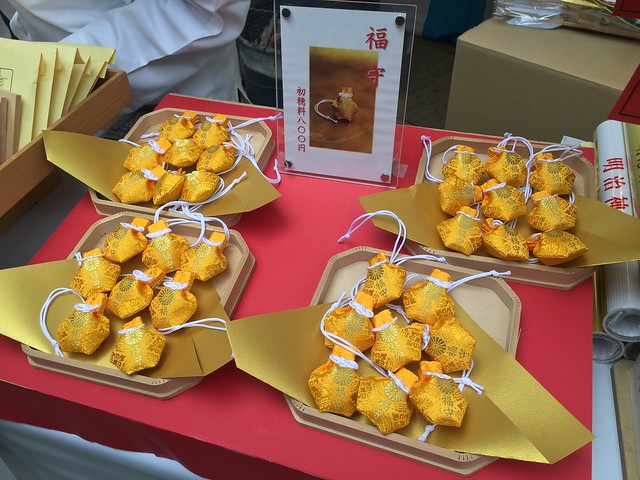
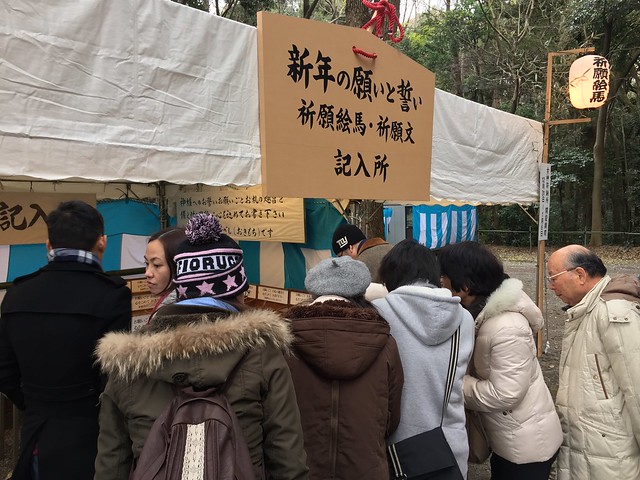
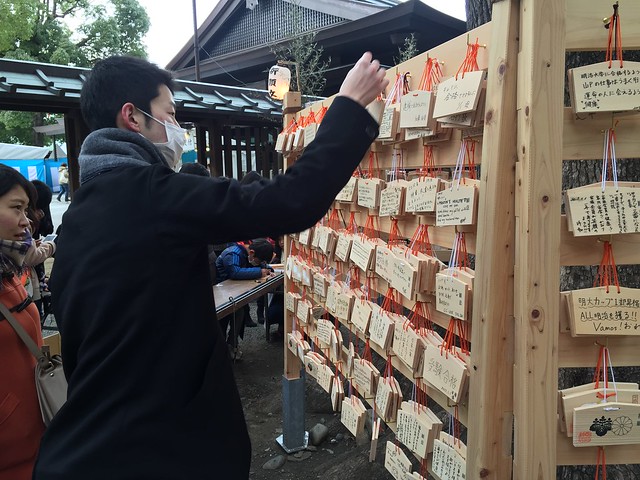
For me, it was a waste to hang the wooden charm there. In fact, I had a good time reading the wishes written on it. Guess the Japanese are fine with it, otherwise they would hang it with the written side facing inside, right?
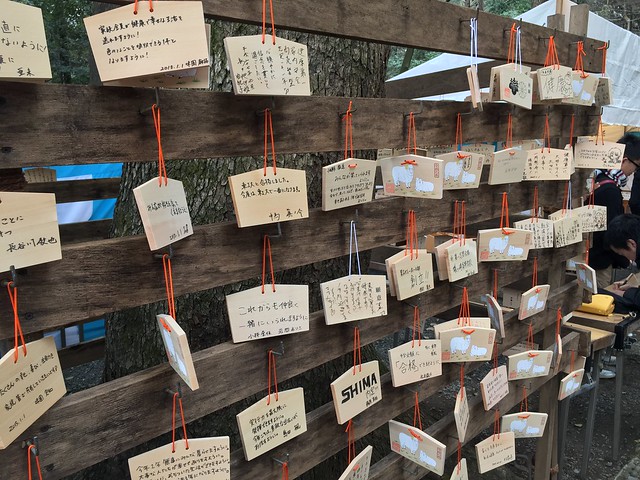
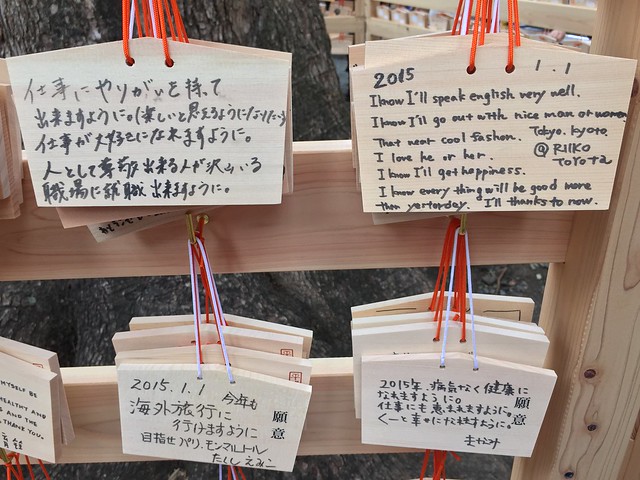
Basically I've bought all the available Omamori. Charm for safe travel for myself, good health for the parents, safe journey for the boyfriend and sister, and more. The charm costs around 800yen to 2000 yen each.
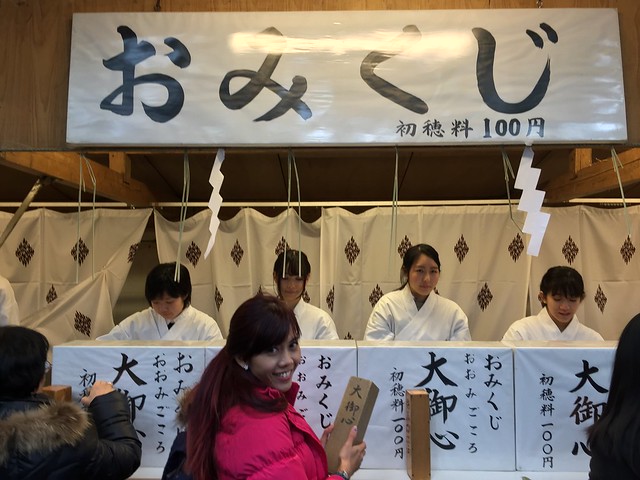
My most favourite thing to do in shrine, the Omikuji!
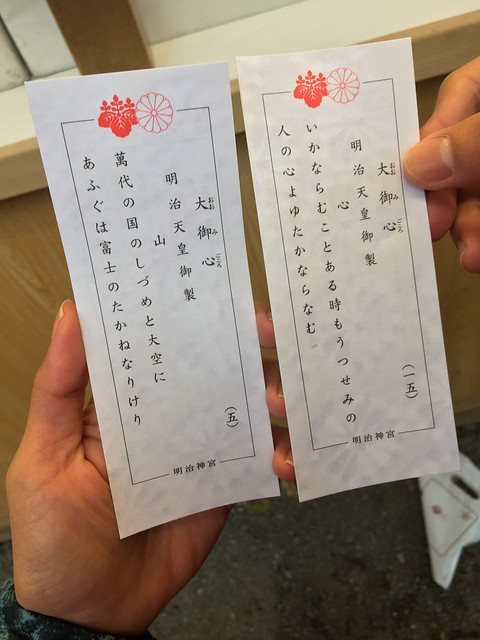
If you can read Japanese, it's a poem written on it. There isn't an English version though. I get my reading from the Shrine staff, and yeah, I have a good year indeed. I take it seriously, this is my second Omikuji. My first was back in 2012, what has written on it, I take it as reference, and it really make some minor changes in my life.
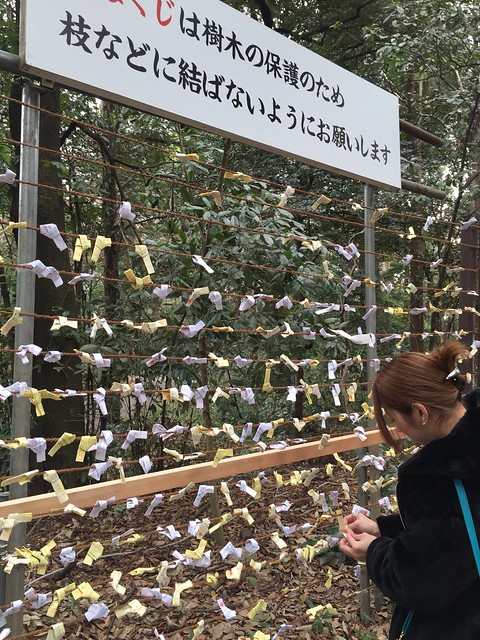
What happened if you get a bad reading? The Japanese ties their bad Omikuji to this rack, to shake off bad luck. Then, you can ask for a new Omikuji.
Next, food feast!
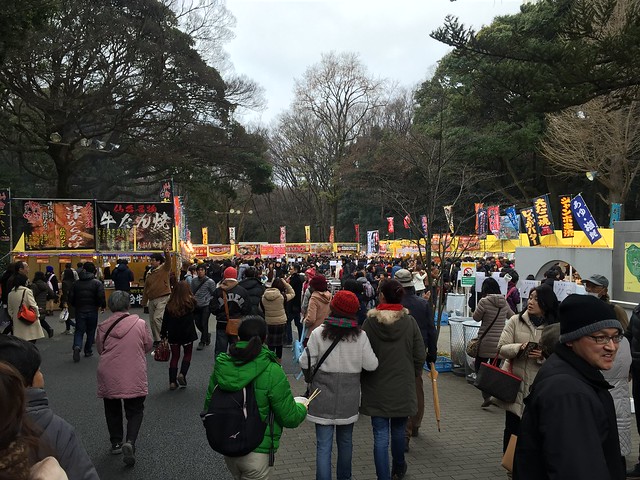
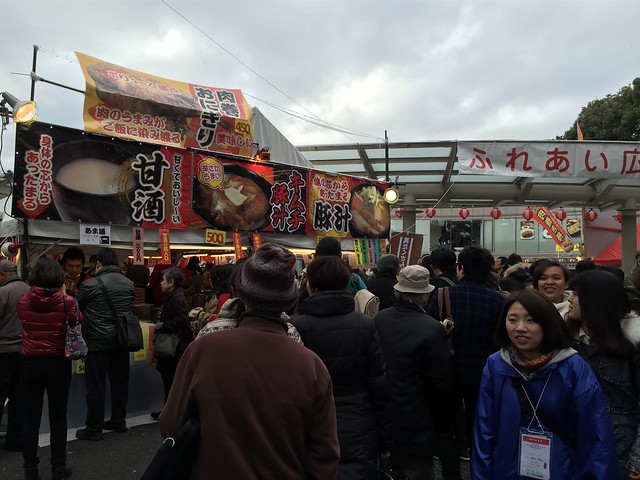
I did not take any #foodiephoto. My brother and I were shaking in cold, we bought the alcoholic drink and surprisingly, it's sweet and taste so good!
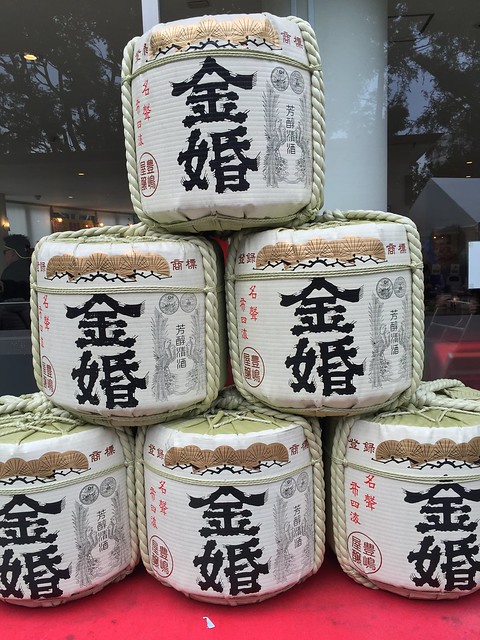
Some omiyage/souvenirs, people?

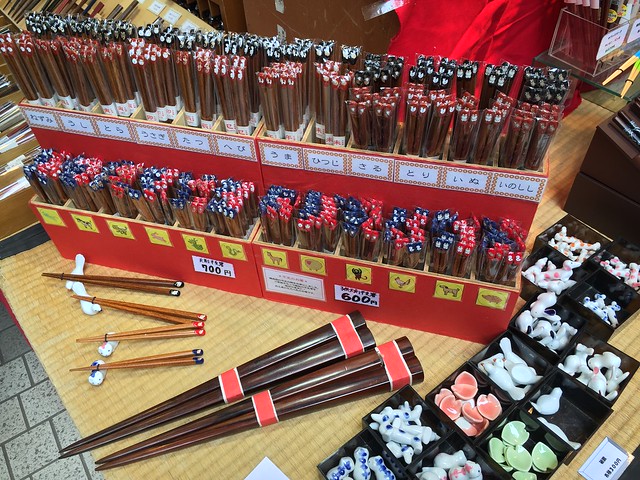
I wanted to get this giant pair of chopsticks but the brother doesn't think it's a good souvenir though.
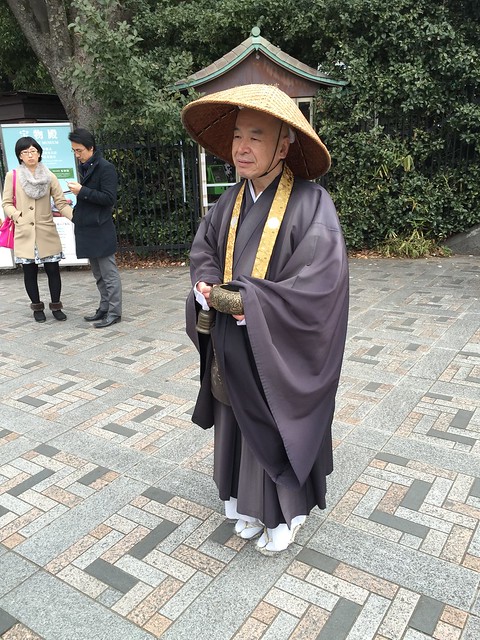
A real Japanese monk!
Well, besides the New Year prayer, one of the best things to do during the New Year is Fukubukuro! Have you heard about that?
